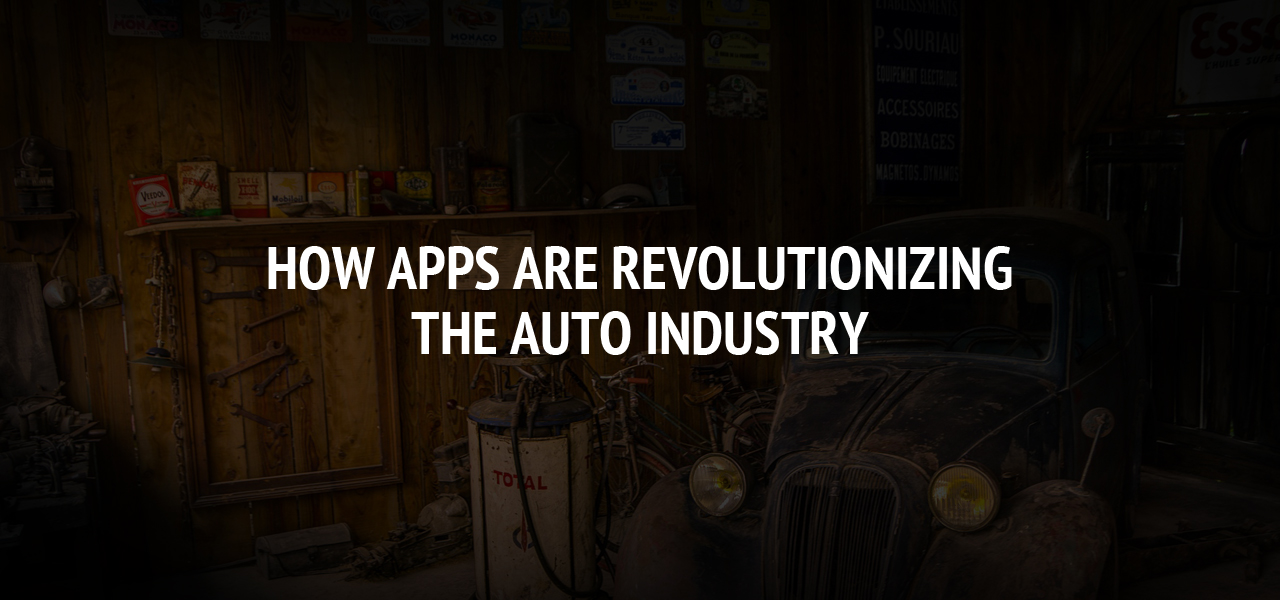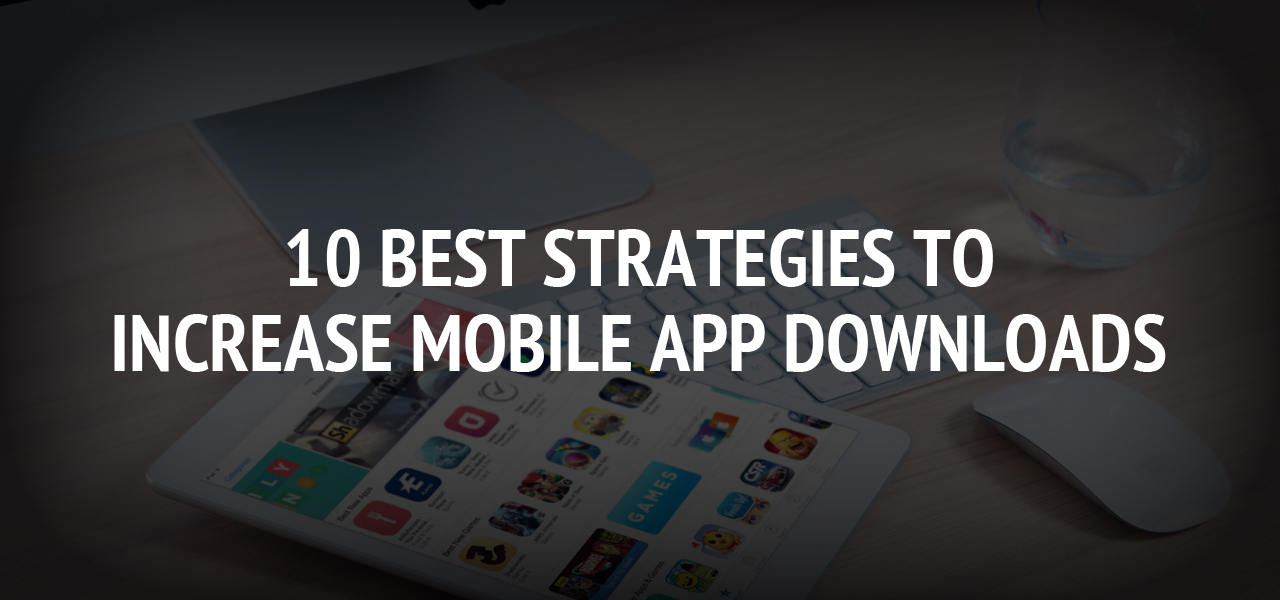How Apps are Revolutionizing the Auto Industry

Smartphones have been around since the late 2000s, yet it’s taken car manufacturers over a decade to catch up with all the innovation that these pocket-sized computers have brought into our lives, despite studies showing that smartphones play a major role in the way consumers interact with the automotive industry.
A recent survey found that 72% of car buyers used their smartphones to find the vehicle they ended up buying, and that 52% of them used one while looking for new parts. But this extends much further than the buying process.
With the advent of Android Auto and Apple CarPlay, we’re finally seeing automakers adopt these new technologies. The entire driving experience is being revolutionized by innovations such as Tesla’s self-driving system, while navigation apps are doing way more than just showing us where to turn.
In this post, we’ll take a closer look at how apps and software are revolutionizing the auto industry and changing the way we interact with our vehicles in surprising ways.
Ride Sharing
Ride sharing services such as Uber and Lyft were one of the first to combine application technology with cars. The auto industry has changed significantly since then, along with the public transport sector. Consumers can now be driven around in anything from an economic Toyota to a high-end Mercedes without spending more than a few dollars.
People living in dense urban areas no longer need to buy cars to get around quickly. It has also opened up a vast number of employment opportunities for people who already own cars. Just about anyone with a newer vehicle can earn a part-time income driving for Uber, or even make a living with it.
Due to this societal shift, automakers have been forced to change their unit sales-driven business models, providing more value on the lower end of the market to keep consumers interested in buying their own cars.
Autonomous Technology
If you told someone ten years ago that in 2019, you could find videos online of people falling asleep on the highway in their self-driving cars, they’d probably be hard-pressed to believe you. Yet, it’s happening. And while it’s arguable that they’re leading the way, it’s not only Tesla who is innovating in this field.
Toyota, Nissan, Mercedes, Honda and many more manufacturers are slowly releasing their own take on the autonomous car. Going back to ride sharing, Uber and a few other companies are also investing in self-driving technology. In the not too distant future, consumers will be able to hail an autonomous vehicle to pick them up just like you would a taxi.
Smartphone Synchronization
Gone are the days of having to keep a book of discs with you all the time, or even a flash drive for that matter. Today, you can synchronize your smartphone with your car’s entertainment system to unlock a plethora of possibilities that extend much further than just playing music.
With Android Auto and Apple CarPlay, you can read messages and answer calls that appear on your smartphone, right from your car. You can also browse the web and access online music libraries, ensuring that you never have to listen to the same song again.
In addition to these features, navigation has become more advanced than ever. Drivers can now use voice commands to enter their destinations, receive warnings for accidents, traffic and speed limits, automatically find alternative routes, and much more.
Education and Employment Opportunities
Many recent technologies that are being incorporated into modern cars are extremely advanced, requiring a certain level of skills and knowledge to develop. As a result, new courses and qualifications are appearing that are geared towards tech-minded individuals who want to be part of the first wave of innovators in this field.
For example, the masters in electrical and computer engineering from Kettering University focuses specifically on advanced mobility. This incorporates the integration of electrical and computer systems in cars, as well as artificial intelligence and autonomous technology. If you’re passionate about this industry, it may be a considerable career path to pursue.
Freight Transport
It's not only consumers who are benefitting from the power of apps. For example, fleet management company Zonar recently introduced the FieldView app, which allows freight company managers to keep track of their drivers. This is another great way that apps are making the transport industry safer and more efficient for everyone.
Safety Technology
Safety tech such as lane-keep assist, cruise control and park assist look primitive when compared to what you can find in a modern car today. Take the technology found in luxury vehicles such as Bentley and Rolls Royce. Their 3D visualization tech uses an array of cameras found along the bodywork of the car to produce a live aerial view of your vehicle.
This comes in incredibly handy when parking in tight spaces - especially if you have a luxury car the size of a boat, making it all the more ironic that it’s generally the large, luxurious sedans that have this tech at the moment.
Modern vehicles also use technology such as the heads-up display, which shines a hologram onto your windscreen, providing information such as speed, time and gear selection.
Efficiency
If you’ve ever seen an electric car in action, you’ll know that there is some serious tech powering these vehicles. Using artificial intelligence and advanced algorithms, electric automakers are able to significantly improve the efficiency of their vehicles with tech such as regenerative braking.
Vehicles still powered by combustion engines are no exception. For example, even the lowest end of economic vehicles from Audi and Volkswagen feature start-stop technology, which automatically turns the car’s engine off at a traffic light and powers it back on as soon as you need it.
Conclusion
These are just some of the astounding ways that apps and technology in general have revolutionized the auto industry in recent years. There's no telling what the future holds for the way we drive, but it's safe to say that things can only get more exciting from here. Just don't forget that texting and driving is still a bad idea - unless perhaps your car drives itself.
About The Author
Related Blog
View All-
The Best Ways To Fund An App Startup
Entrepreneurship has found great footholds among the world of smartphone app creators. It’s such a widespread market, in fact, that funding can be one of the only things standing in the way of entrepreneurs trying to pass the barriers of entry. Smartphones ...
-
10 Best Strategies to Increase Mobile App Downloads
Compelling people to download your app is an achievement. In case you do not know, app developers submit approximately 2,000 apps on Apple App Store and Google Play Store daily, hoping it will be the next best thing. Unfortunately, the majority of apps out there ...







